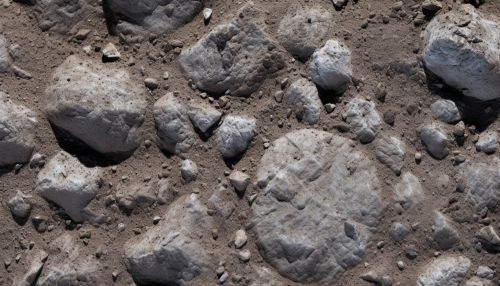Lunar soil
Introduction
Lunar soil, also known as regolith, is a layer of loose, fragmented material that covers solid bedrock. It is a product of various processes such as meteorite impacts, solar wind action, and volcanic activity. The soil is composed of small fragments of rock, mineral grains, and tiny shards of volcanic glass.
Composition
The composition of lunar soil varies depending on location. However, it is predominantly composed of small fragments of basaltic and anorthositic rock, mineral grains such as olivine, pyroxene, plagioclase, and ilmenite, and tiny shards of volcanic glass. The soil also contains trace amounts of water, helium, and other volatile elements.


Formation
Lunar soil is formed through a process known as "gardening". This involves the constant churning and overturning of the surface layer due to meteorite impacts. The impacts break down the rocks and minerals on the surface, creating a layer of loose, fragmented material. The soil is also enriched with elements such as helium and hydrogen from the solar wind.
Properties
Lunar soil has several unique properties. It is extremely fine and powdery, with a consistency similar to flour. The soil is also highly abrasive due to the lack of weathering and erosion on the Moon. This can cause wear and tear on equipment and spacesuits. Additionally, lunar soil is electrostatically charged due to the solar wind, causing it to cling to surfaces.
Uses
Lunar soil has potential uses in future lunar missions and colonization. It could be used as a raw material for the production of building materials, such as bricks and concrete. The soil could also be used to extract useful elements, such as oxygen for life support and helium-3 for nuclear fusion power. Furthermore, the soil could be used for agriculture in lunar greenhouses.
Challenges
There are several challenges associated with lunar soil. The fine, powdery nature of the soil can cause it to become airborne and contaminate equipment and habitats. The abrasive nature of the soil can cause wear and tear on spacesuits and machinery. Additionally, the electrostatic nature of the soil can cause it to stick to surfaces and create dust clouds.
